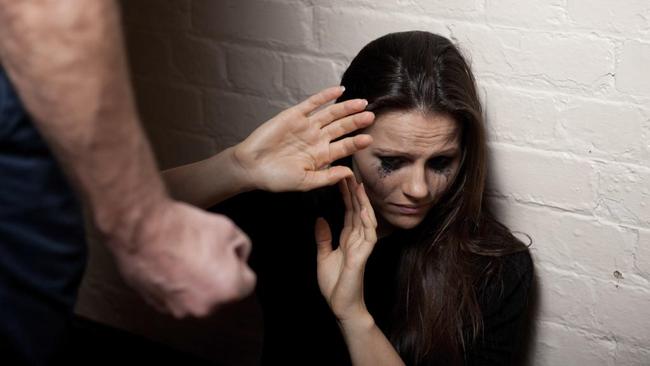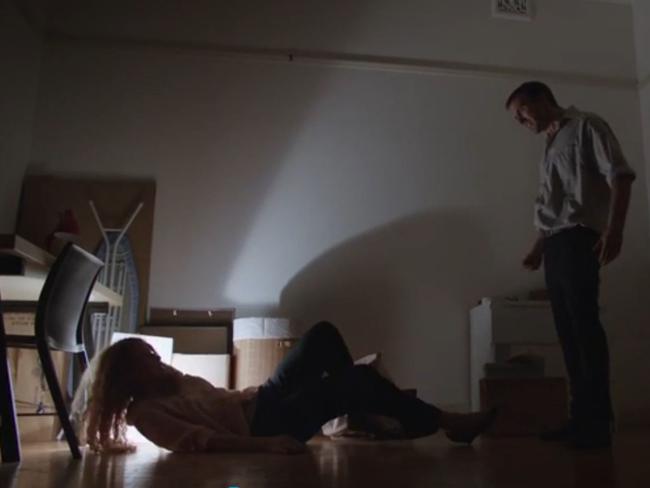Domestic violence: New guide spells out first national guidelines for judges and magistrates
Judges and magistrates have been issued with new guidelines and they include causing emotional and psychological warfare - even criticising housework.
NSW
Don't miss out on the headlines from NSW. Followed categories will be added to My News.
- DOMESTIC VIOLENCE NOT JUST A FEMALE PROBLEM
- DV ASSAULTS UP 44 PER CENT AS VICTIMS SPEAK OUT
- THE IRREFUTABLE FACTS ABOUT DV IN AUSTRALIA
CRITICISING housework and withdrawing affection are defined as domestic violence in the first national guidelines for judges and magistrates.
The new “bench guide’’ for courts released by Attorney-General George Brandis yesterday spells out what can be considered family violence — ranging from physical attacks to yelling or criticising a partner’s appearance or threatening to have an affair.
It gives examples of emotional and psychological abuse as “angry verbal outbursts, staring, silence, ignoring and withdrawal of affection’’.
The official judicial guide also cites “social abuse’’ such as criticising the way a partner takes care of the house or becoming upset when chores are not finished.

But Law Council of Australia domestic and family violence taskforce chair Dr Jacoba Brasch QC yesterday said a “one-off’’ criticism of housework would not constitute family violence. “Domestic violence or abuse involves violence and threatening behaviour that coerces, controls or causes fear,” she said
NSW Police recorded a record 29,227 cases of domestic violence-related assault in the year to March plus 13,310 breaches of apprehended violence orders.
The online guide urges judges to look beyond physical violence when deciding whether to grant a domestic violence order, saying: “A perpetrator may intend to intimidate and induce fear ... through physical violence or harm yet cause minor or no visible signs of injury.’
“The perpetrator may drive dangerously when the victim or children are in the car, or smoke in the home knowing the victim has a respiratory condition, or lock the victim outside during the night.’’

The judicial guide criticises judges and magistrates who focus only on “recent physical violence” instead of a “complex pattern of violent or abusive behaviours’’. It also says children “do not need to see or hear violence to be exposed to it’’.
Senator Brandis said the guide would “assist judicial officers with their decision-making’’ while Dr Brasch said it “does not rewrite the law nor change definitions’’ of abuse. “It is a guide only,’’ she said.

Domestic abuse survivor Kay Schubach, 51, yesterday welcomed the guide, saying physical abuse was not the only manifestation of domestic violence: “There’s a whole litany of controlling behaviours — emotional and financial. I see a lot of these things go on and it gets hidden away. It is great to see this benchmark is so comprehensive.”
As a NSW Domestic Violence ambassador she said she came across many women whose confidence had been eroded by manipulative abusers: “They make the woman feel no one will believe her.”
The state government changed domestic violence laws in June so victims no longer have to prove they have a fear for their physical safety for a restraining order.

MIND GAMES AND THREATS
THEIR OWN WORDS
Victims say abusers have:
* Put down my appearance
* Became upset if chores not done
* Treated me like a personal servant
* Become jealous of my friends and other men
* Tried to convince me I was crazy
WHAT THE NEW GUIDELINES SAY
Emotional or psychological abuse may also involve:
* Threatening to divorce or abandon the victim if the victim fails to comply with demands
* Threatening to commit suicide if victim leaves
* Restricting the victim’s contact with family and friends
* Restricting access to a car or finances
* Strategic intimidatory behaviour ... including angry verbal outbursts, staring, silence, ignoring and withdrawal of affection



